
Students can obtain a different way of looking at the Thanksgiving holiday.
- Provider:
- Smithsonian Institution
- Author:
- National Museum of the Native Americans
- Date Added:
- 06/24/2019

Students can obtain a different way of looking at the Thanksgiving holiday.

This lesson investigates where and why the English colonists settled in America. The lesson also looks at leaders who had an impact on the development of the colonies and their reasons for founding the colonies.
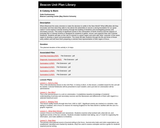
In this unit, students explore Colonial America through the building of timelines and investigating primary and secondary sources. This study of significant events in the colonization of North America and the aspects of everyday life in Colonial America is designed for students to gather, record, and organize their own Colonial Notebook. Students will take on the role of colonist in a given region and work with other 'colonists' of the same region to develop a report and presentation. The study will take students through the life and times of those early settlers and will have them preparing a colonial meal representative of their region of focus
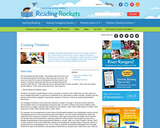
This resource provides timeline activities for grades K-5.
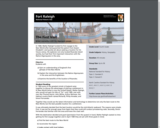
In 1584, Walter Raleigh funded his first voyage to the New World after being granted the patent from Queen Elizabeth I and quickly set about seeking a location for his future colony. His explorers not only located Roanoke Island quickly, but had their first important interaction with the Native Algonquians in the area.
Through this reading and activity, students will: a) Gain an understanding of England’s first glimpse of the New World; b) Explain the interaction between the Native Algonquians in the area and the Englishmen; c) Examine the benefits of the location of Roanoke.

In this lesson, students explore how the French and Indian War affected the American Revolution.
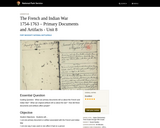
In this lesson, students read about one of 14 primary documents or artifacts associated with the French and Indian War, and then analyze the document or artifact.

In this lesson, students will acquire an understanding of the major events, conflicts, or hostilities that took place between the various Indian tribes and the U.S. as more Americans settled in the Ohio country during the late 1700s. Students will be able to explain the causes and effects of these events on the Native Americans.

Students learn about the governing systems that developed in the colonies. Systems of government are compared, particularly those that are representative of the people and those that ruled without the consent of the people, including the monarchy.

In the previous unit, students learned about European exploration and colonization in the Western Hemisphere. Students were introduced to the English colonial regions (New England, Middle and Southern colonies) and reasons for coming to the New World. This lesson investigates where and why the English colonists settled in America. The lesson also looks at leaders who had an impact on the development of the colonies and their reasons for founding the colonies.

In this lesson, students learn about the governing systems that developed in the colonies. Systems of government are compared, particularly those that are representative of the people and those that rule/d without the consent of the people, including the monarchy.

This lesson focuses on the war of 1812. It focuses on causes and effects, and on using primary sources. American symbols related to the War of 1812 are included. Students recognize political, economic, geographic, and social influences on events.

In this lesson, students learn about the political, economic, and geographic regional differences that led to conflict in the United States through map sketches, primary sources, problem-solving and points of view.

Students can learn abouth the Harvest Ceremony which is part of many Native American tribes.

Students and teachers can learn about the Haudenosaunee Alliance of various Native American groups including the Mohak from North Carolina.

Students analyze the seal of the city of New York, use maps, and read and discuss a passage to understand how trade connected Native Americans and Dutch sailors in early New Amsterdam.

Students learn about the Native American peoples who lived in the region which is now Oregon and Washington states.
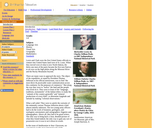
This resource details the Lewis and Clark expediition. The object of the expedition, as stated by President Thomas Jefferson in his official instructions, was to find "the most direct & practicable water communication across this continent, for the purposes of commerce."

Students will learn about the importance of preserving Native culture and see how families share and pass down traditions. Students will gain an understanding of the ongoing Plains traditions of beadwork and quillwork"”decorative arts done with beads and porcupine quills"”and the "giveaway" (an honoring celebration). Students will explore the significance of designs and symbols found on dresses and better understand the Plains peoples"™ long-standing, close connection to their surroundings and natural resources.

In this lesson, students can learn about the traditions of the Sioux, who resided in the Midwestern part of the United States. This lesson focuses on their winter traditions, including the migration patterns which they followed.